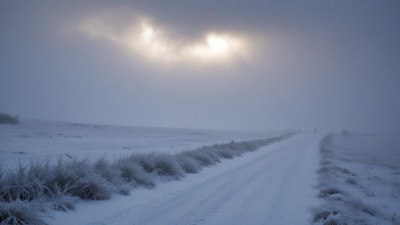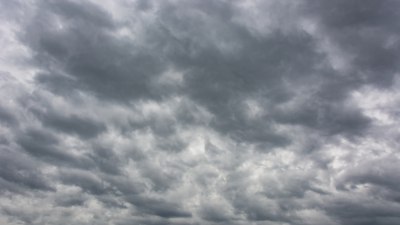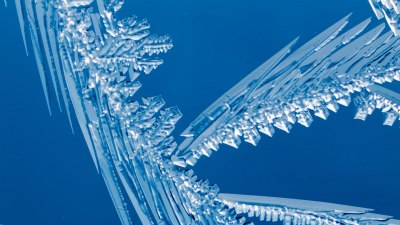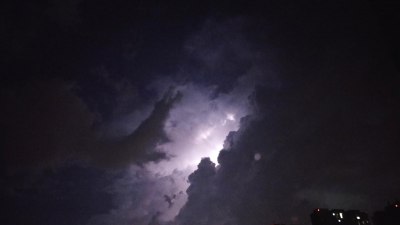How Do Blizzards Start
Discover the science behind blizzards, including formation, conditions, and impacts.

This image was created with the assistance of Freepik
Blizzards are some of the most severe and disruptive winter storms that can occur, characterized by heavy snowfall, strong winds, and low visibility. Understanding how blizzards form is vital for preparedness and safety. Meteorologically speaking, a blizzard requires specific conditions, including cold air, significant moisture, and strong winds. This article delves into the intricate processes that lead to the formation of blizzards, the types of atmospheric conditions that favor their development, and the impact they have on the environment and human activity.
Understanding Meteorological Conditions
The formation of a blizzard begins with several meteorological key elements converging in a unique way. A blizzard typically occurs during the winter months when cold air mass dominates a region, which is often accompanied by a low-pressure system that leads to various weather phenomena. For a winter storm to be classified as a blizzard, three main criteria must be met: sustained winds of at least 35 mph, visibility reduced to a quarter mile or less due to falling or blowing snow, and snow accumulation over a significant period. These elements together create truly treacherous conditions, making travel and outdoor activities extremely hazardous.
The Role of Temperature
Temperature plays a critical role in the formation of blizzards. A blizzard requires a robust cold air mass to hold the necessary frigid temperatures that promote snow, instead of rain or sleet. This cold air usually originates from polar regions and can be influenced by various climatic factors, including high-pressure systems that can either enhance or inhibit the dynamics of storm systems. When this cold air moves over a warmer body of water or a slightly warmer landmass, it can pick up moisture, which later condenses and falls as snow once it is brought into the colder air mass. This process is vital as it ensures that the precipitation falls as snow rather than rain, contributing to the blizzard conditions.
Moisture Accumulation
Another crucial element in the development of a blizzard is moisture accumulation. For snow to fall at significant rates that can lead to blizzard conditions, the presence of moisture in the atmosphere is essential. This moisture is often sourced from warm air masses that interact with colder conditions. When these warm, moist air masses rise and cool as they encounter the cold air, they lose their ability to retain water, leading to condensation and, eventually, precipitation.
Low-Pressure Systems
Low-pressure systems are significant drivers of weather patterns that can lead to blizzard formation. These systems are associated with rising air, which allows for cloud formation and precipitation. When a low-pressure system moves in from the ocean or another warm region, it can draw moist air upward while simultaneously pulling in colder air from surrounding areas. This interaction can create powerful winter storms that, if combined with strong winds, result in the blizzard conditions described. These low-pressure systems can vary in strength and are often responsible for prolonged blizzard conditions in specific regions.
Wind Strength and Direction
The strength and direction of the wind are significant contributors to blizzard conditions. For a snowstorm to escalate into a blizzard, sustained wind speeds must exceed 35 mph, creating dangerous wind chills and blowing snow. This wind allows for the transport of snow, reducing visibility and leading to whiteout conditions. Wind can also impact temperatures, making it feel considerably colder than the actual air temperature. In addition, winds can cause the accumulation of snow to become uneven, leading to drifts and hazardous travel conditions.
The Life Cycle of a Blizzard
The life cycle of a blizzard consists of a few distinct phases: development, maturity, and dissipation. During the development phase, cold and moist air masses begin to converge, and precipitation arises from developing clouds. As these elements come together, the storm can grow in intensity and coverage, marking the beginning of blizzard conditions. The maturity phase is characterized by the peak intensity of the storm, where maximum effusion of snowfall and wind speeds is experienced, leading to the harshest conditions. Finally, the dissipation phase occurs when the storm begins to weaken, and the cold air mass loses its moisture, resulting in clearer skies and a gradual return to normal weather patterns.
Geographical Influence
The geographical location plays a significant role in the occurrence of blizzards. Coastal regions may experience blizzards due to the immediate access to moisture from the ocean, while interior regions can witness severe blizzards as cold air masses collide with moist air traveling from unaffected areas. Mountainous terrains can also create snow shadow effects, where one side of the mountain experiences heavy snowfall while the other remains drier. Regions closer to the poles are more susceptible to blizzard conditions, as they regularly receive the cold air required for the development of these storms.
Mitigating the Risks of Blizzards
There are numerous safety measures and precautions that can be taken to mitigate the risks associated with blizzards. First and foremost, staying informed about weather conditions through reliable meteorological sources is crucial. This information can provide timely alerts regarding impending storms and allow residents to prepare adequately. Additionally, maintaining an emergency kit with essential supplies, such as drinking water, food, blankets, batteries, and a first-aid kit can prove beneficial in case of extended power outages or travel restrictions. Furthermore, it is essential to create a family plan outlining communication strategies in the event of a blizzard.
Impacts on Infrastructure and Community
Blizzards collectively have significant impacts on infrastructure and community life. Heavy snow accumulation can disrupt transportation networks, leading to impassable roads and flight cancellations. In some cases, blizzards can cause power outages due to downed power lines, leaving communities without electricity and heating in the winter cold. Critical services like emergency response teams also face challenges, as access to affected areas may be limited. Business operations can be severely disrupted, leading to economic ramifications in affected regions. Educational institutions often face closures, impacting students' learning experiences.
Long-Term Impacts on the Environment
Beyond immediate disruptions, blizzards can have long-term impacts on the environment. The heavy snow cover can be beneficial in some cases, helping replenish groundwater supplies as it melts in the spring. However, the sudden melt from heavy snow can also cause flooding if the ground is still frozen. Additionally, recurring blizzard conditions may alter natural habitats, affecting wildlife, especially those that depend primarily on the structure provided by snow cover for survival. Understanding these long-term effects is essential for planning environmental conservation efforts in vulnerable regions.
Looking Ahead: Climate Change and Blizzard Patterns
As the climate continues to change, the patterns and frequency of blizzards may shift significantly. Warmer global temperatures can lead to complicated weather patterns, which could result in increased moisture availability but also lead to unpredictable storm trajectories. The interplay between global warming and snowfall patterns requires further research and analysis to understand the changing dynamics of winter storms. It is essential to stay informed and gather scientific insights to grasp how climatic shifts can influence the occurrence and severity of blizzards in the future.
In conclusion, blizzards are complex atmospheric phenomena resulting from a combination of various factors, including cold temperatures, moisture, wind strength, and unique geographical conditions. Understanding the processes behind their formation not only helps in recognizing the wild nature of these storms but also aids in enhancing preparedness efforts to mitigate their risks on communities and infrastructure alike. As we navigate through a changing climate, keeping abreast of meteorological trends will be paramount in adapting to the unpredictable nature of winter storms, including blizzards.











